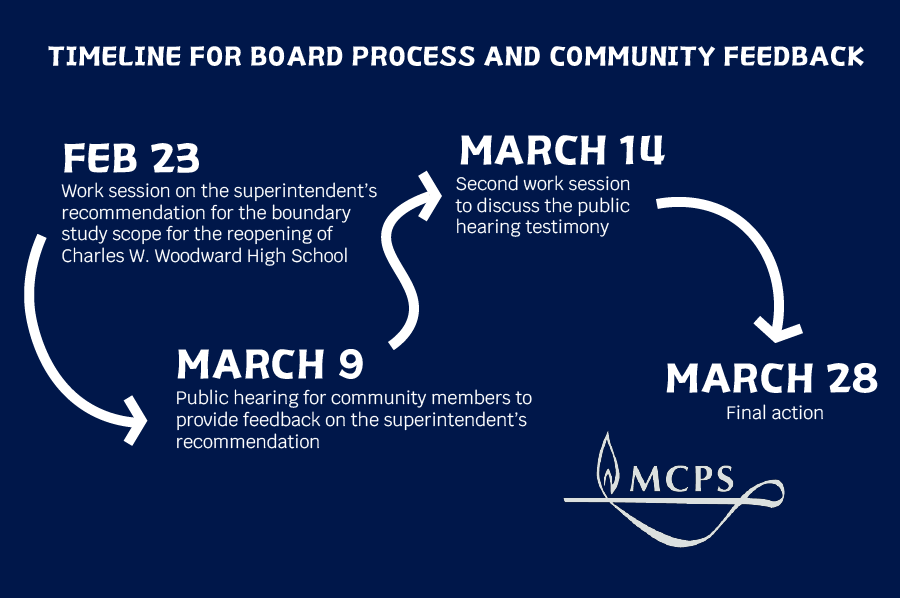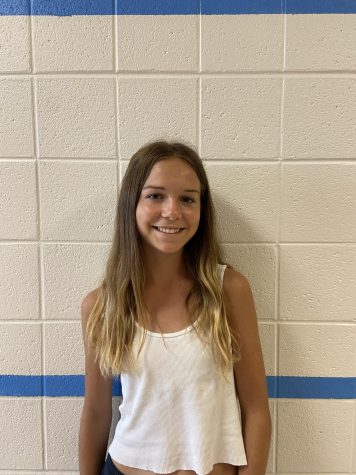Superintendent recommends including Whitman, 21 other schools in Woodward HS boundary study
Superintendent Monifa McKnight’s recommendations represent the first stage of establishing the scope of the boundary analysis, which will determine how MCPS populates the high school when it reopens in 2026.
March 10, 2023
At a Feb. 23 Board of Education meeting, MCPS officials recommended that the school district analyze the boundaries of 22 schools — including Whitman — in a boundary study for the reopening of Charles W. Woodward High School in North Bethesda.
Superintendent Monifa McKnight’s recommendations represent the first stage of establishing the scope of the boundary analysis, which will determine how MCPS populates the high school when it reopens in 2026. Woodward closed its doors in 1985 to merge with Walter Johnson High School, but enrollment increases led the school district to allocate funds in 2019 to reopen the school.
MCPS Department of Facilities Management Director Seth Adams said at the Feb. 23 meeting that the proposed study aims to solve capacity challenges at Downcounty Consortium (DCC) and Walter Johnson High Schools while creating more diverse school environments. The recommendations included a list of eight high schools and 14 middle schools for the Board to consider including in the boundary study.
As part of the school district’s process for determining which schools will appear in the boundary study, the Board held a public hearing for community members at 6:00 p.m. today.
On March 14, the Board will hold a second work session to discuss the scope recommendations before taking final action on March 28.
The new study comes four years after the Board hired the consulting firm WXY to conduct a systemwide boundary analysis to address increased student enrollment as well as socioeconomic and racial disparities across schools. The study drew criticism from some parents, who argued that redistricting would increase the length of bus rides while reducing home values and widening achievement gaps. As part of the study, the Board and WXY held community engagement sessions that collectively reached more than 4,000 community members before releasing the final report in May 2021. The firm wrote in the final report that MCPS’ school boundaries “may contribute to racial and/or socio-economic isolation.”
The Superintendent’s recommendations at the Feb. 23 meeting outlined the process for a continuation of MCPS’ engagement efforts from 2019. According to Board of Education At-Large member Lynne Harris, the boundary study will attempt to address inequities in resource availability across the county. The district plans to host programs at Woodward that are currently inaccessible to students nearby, Harris said.
For Student Member of the Board Arvin Kim, a Whitman senior, the boundary study is an exciting opportunity for community members to “change the way we see the county.”
“I really am excited about the opportunities that present themselves — certainly to address the capacity issues, but also to create more diverse and equitable school environments,” Kim said.
As a student, Kim said that it was uplifting to see a boundary study that would work to ensure that all MCPS students have access to a high-quality education regardless of their zip code, socioeconomic status or race.
Some community members, including Whitman parent Jamie Levin, believe that including Whitman in the study could disrupt students’ academic careers and communities, she said.
“I feel that it would have a negative impact for the kids to be taken out of the cluster they are ‘meant to be in,’” Levin said. “The student population and surrounding neighborhoods are accustomed to our current jurisdictions.”
After members take final action on the Superintendent’s recommendation on March 28, the Board will hire a firm to conduct a boundary analysis. The study will begin in 2024 and use community meetings, multiple boundary options and feedback from consultants to release a final report in early 2025. The Superintendent will then deliver final boundary change recommendations based on the report, and during the winter of 2025, the Board will host work sessions and public hearings before voting on proposed boundary changes.
For Adams, community engagement through public hearings like the one that took place today is an important part of ensuring that stakeholders understand their involvement in the boundary study, he said.
“The beauty of these types of processes is that you create the opportunity to start looking at programs and access,” Adams said. “It just allows [for] more opportunities to have a robust conversation about the needs of communities, the needs of schools and to make sure every student voice is heard as we reenvision MPCS through these boundary processes.”










